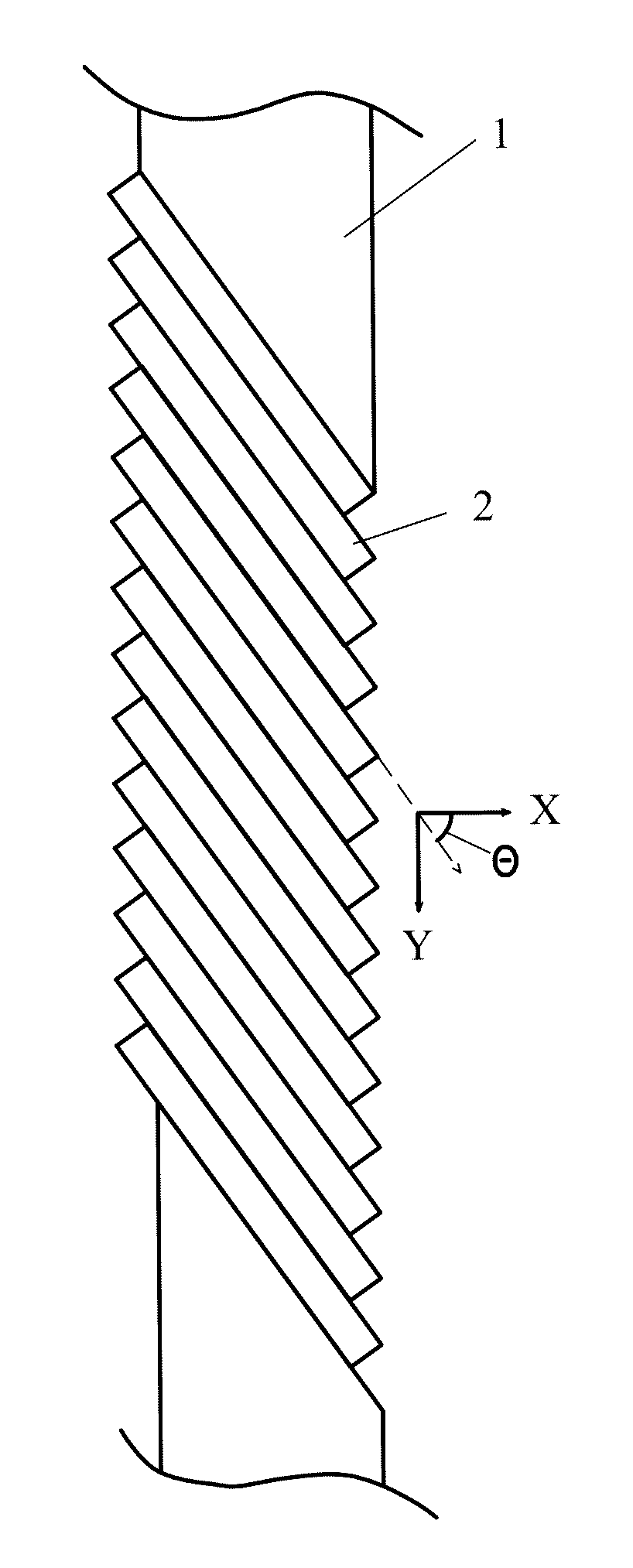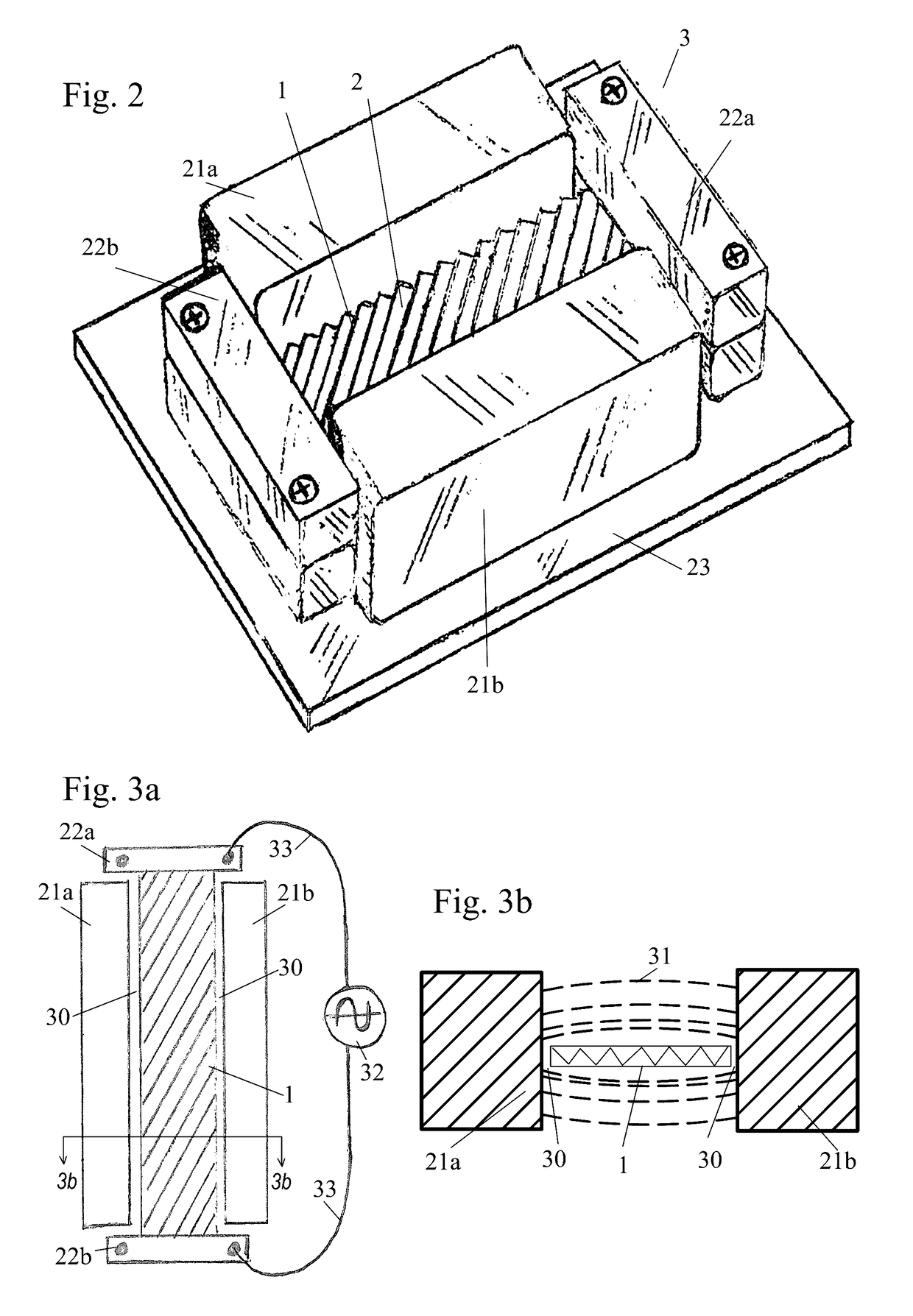Ribbon transducer
a ribbon transducer and ribbon technology, applied in the direction of transducer details, electrical transducers, electrical apparatus, etc., can solve the problems of limiting the use of transverse corrugation ribbon transducers to higher frequency operation, elongation of ribbon elements, loss of initial installed tension of ribbon elements, etc., to increase the reliability of vibrating ribbon elements, power handling, and the effect of prolonging the useful frequency rang
- Summary
- Abstract
- Description
- Claims
- Application Information
AI Technical Summary
Benefits of technology
Problems solved by technology
Method used
Image
Examples
first embodiment
[0053]FIG. 4 shows a perspective view of a fixture for forming a corrugated vibrating ribbon element 1 using a rack 40 and pinion 41 arrangement. FIG. 9 shows a cut-through view of FIG. 4 along the lines 9-9. In this method of forming the ribbon element 1, the flat ribbon element 1 is placed on the rack 40 at the desired angle, and the pinion 41 is rotated about its axis 44. This causes the pinion 41 to travel along the rack 40 as indicated by dash-dot line 45, and the teeth 43 of the pinion 41 bend the ribbon element 1 against the teeth 42 of the rack 40, causing the angled corrugations 2 to form.
second embodiment
[0054]FIG. 5 shows a perspective view of a fixture for forming a corrugated vibrating ribbon element 1, using a pair of pinions 51 and 52. FIG. 10 shows a cut-through view of the embodiment of FIG. 5 along the lines 10-10. In this embodiment, the teeth 55 of pinion 51 interlock with the teeth 56 of pinion 52. As the pinions 51 and 52 rotate about their respective axes 53 and 54, the ribbon element 1 is fed between the pinions at the desired angle. The ribbon element 1 is crimped between the teeth 55 and 56, forming the angled corrugations 2. As the crimps are formed, the ribbon 1 is drawn across the paired pinions 51 and 52, as indicated by the dash-dot arrow 57.
“Composite Ribbon” Embodiment of the Invention
[0055]This embodiment provides a “free swinging” acoustical ribbon transducer with increased vibrating ribbon element reliability, power handling, damping, and extended useful frequency range. This performance is achieved by forming two ribbon elements with angled corrugations as...
PUM
 Login to View More
Login to View More Abstract
Description
Claims
Application Information
 Login to View More
Login to View More - R&D
- Intellectual Property
- Life Sciences
- Materials
- Tech Scout
- Unparalleled Data Quality
- Higher Quality Content
- 60% Fewer Hallucinations
Browse by: Latest US Patents, China's latest patents, Technical Efficacy Thesaurus, Application Domain, Technology Topic, Popular Technical Reports.
© 2025 PatSnap. All rights reserved.Legal|Privacy policy|Modern Slavery Act Transparency Statement|Sitemap|About US| Contact US: help@patsnap.com



